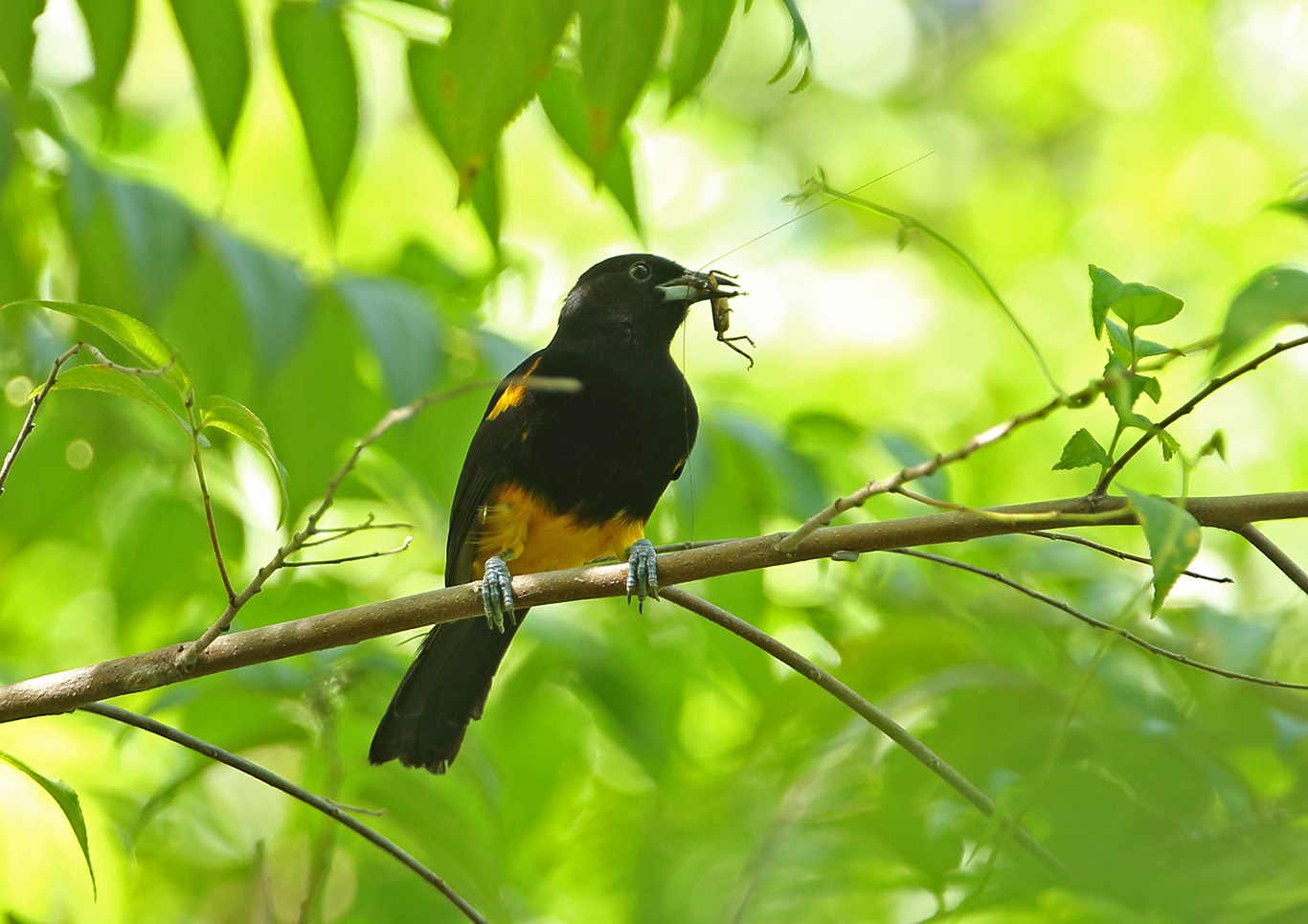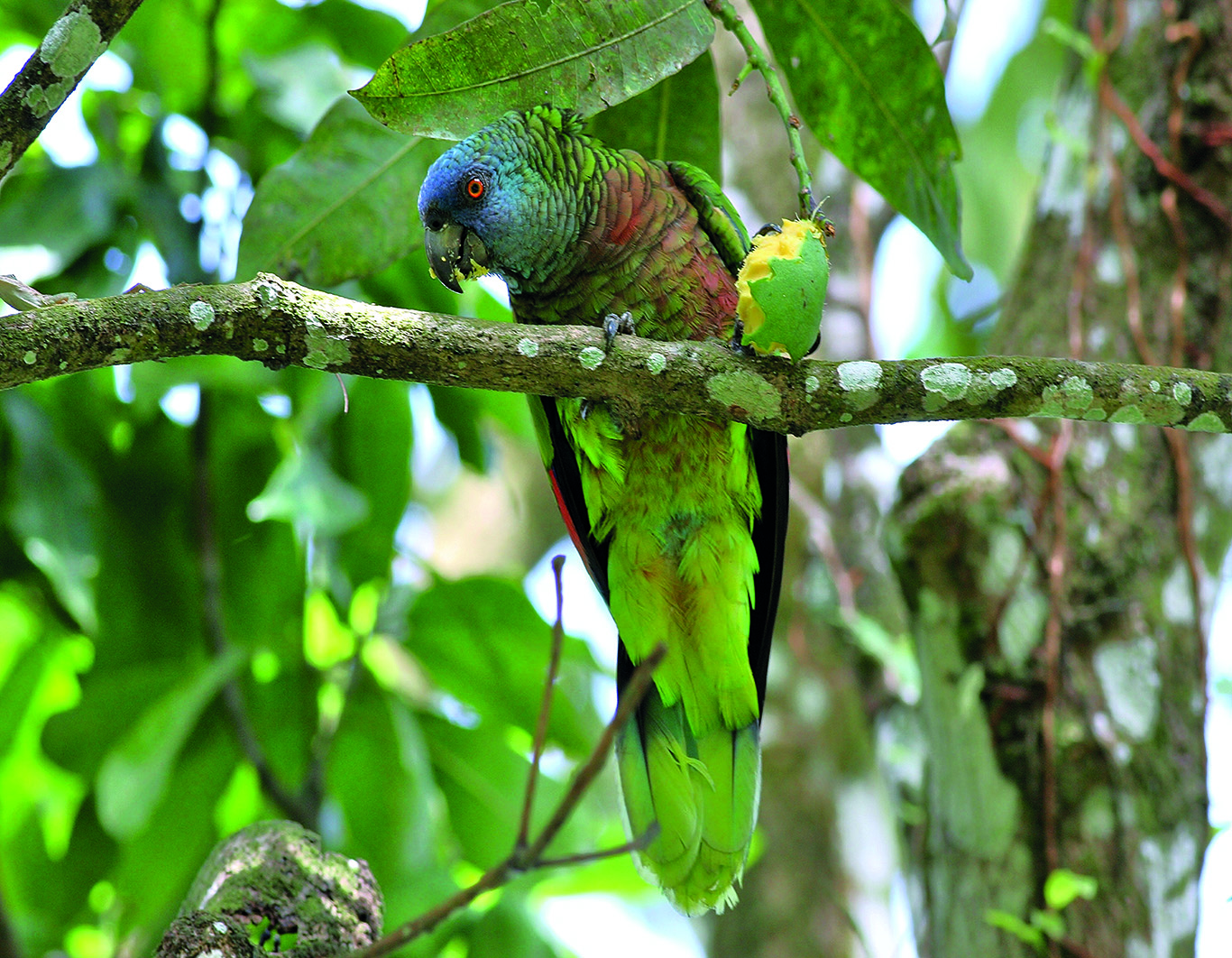Exotic birding destinations exert an irresistible pull during the northern winter, offering a welcome change from the shortage of warmth, light and avian diversity that comes with the territory in colder climes. No matter how much we enjoy watching wildfowl, gulls and other winter visitors, the chance to trade places for the tropics where regional specialities, island endemics and northern migrants mix en masse is one to savour.
The Caribbean offers numerous opportunities, many of them unique to some degree. There are no fewer than 28 nations in the region, and a staggering 7,000 or so individual islands. The various archipelagos and many of the larger islands are well endowed with endemic birds, offering plenty of potential options to the visiting birder.
If you are wondering where to go, especially for a first visit, the choice can be readily simplified: try St Lucia. Lying in the Windward Islands, the southern section of the Lesser Antilles separating the Caribbean from the Atlantic, mountainous St Lucia is still largely covered in lush forest. It also has excellent beaches and a good tourist infrastructure (including direct flights from Britain). And best of all, the birding – with up to five endemics on offer – is outstanding.

St Lucian landscape (Dominic Mitchell / www.birdingetc.com).
West side
Visiting in January, my first taste of St Lucia’s birds came on the west coast at the resort of Anse Chastanet, near Soufrière. Nestled in a cove where the forested western ranges slope steeply down to sheltered sandy beaches by the sea, it offered the ideal mix of creature comforts and prime birding habitat. On checking into my room, which in this hot climate was open to the elements on one side, a fruiting tree right outside harboured several small passerines. Most were Lesser Antillean Bullfinches, but a striking yellow and blue-grey warbler quickly proved to be my first island endemic, St Lucia Warbler. Great start!

St Lucia Warbler (Dominic Mitchell / www.birdingetc.com).
There was plenty of feeding activity in the last of the warm sunlight on that initial day. A Black-whiskered Vireo scolded from nearby scrub, a Bananaquit appeared and then vanished just as quickly, and a much larger skulking bird eventually revealed itself as a Mangrove Cuckoo. A preening Scaly-breasted Thrasher provided another welcome distraction, and then a flash of colour crystallised into a handsome orange-and-black male St Lucia Oriole – endemic number two in my first hour in the field, and a fantastic way to end the day.

St Lucia Oriole (Neil Bowman).
The morning started unexpectedly when I was awoken by a male Lesser Antillean Bullfinch – not singing, but to my surprise actually hopping about in the room. A female briefly joined it before they both flew back out to the forest edge. After a hearty breakfast, where I was joined by Carib Grackles and Bananaquits, I met up with Paul ‘Meno’ Herman, resident naturalist at Anse Chastanet, to explore some of the extensive trails around the hotel.
We didn’t have to go far before the birding started in earnest. Zenaida Doves foraged on the path ahead of us, while Caribbean Elaenias chased insects in the trees and Magnificent Frigatebirds drifted effortlessly overhead. Several Lesser Antillean Saltators skulked in the thickets, as did a solitary Lesser Antillean Pewee – the nominate form of the latter occurring on the island is sometimes split as a sixth endemic, St Lucia Pewee.
I started to ‘pish’ to stir up the forest birds a little, and several St Lucia Warblers quickly reacted. While I was photographing them a slightly duller warbler appeared in the background, and a little more pishing brought it in closer – a Northern Parula, the first Meno had seen. I took a few record shots, but only later when checking references did I realise quite how rare this species was on St Lucia, with just two or three previous records and the last in 1983.
Search party
We saw many other good species in the extensive habitat around the hotel, but for the next endemic it was necessary to head inland into the mountains. For a large, noisy parrot, St Lucia Amazon can be surprisingly tricky to find, but this makes more sense when you consider that there are possibly as few as 230 individuals of this vulnerable species on an island of just 238 square miles. We hiked trails in the Edmond Forest Reserve, eventually seeing two distant parrots and hearing more, as well as Purple-throated and Green-throated Caribs, Lesser Antillean Flycatcher, several Rufous-throated Solitaires, Grey Trembler and another St Lucia Oriole.

St Lucia Amazon (Adams Toussaint / www.saintluciauk.org).
The other endemic restricted to St Lucia’s high-elevation forest, at least in theory, is Semper's Warbler. However, while common and widespread when first described in the late 19th century, it had already become extremely rare and considered almost extinct by the 1930s. The last certain sightings were in March 1947 and on 21 May 1961, since when several possible claims and an RSPB-assisted search expedition have failed to confirm further evidence. Introduced mongooses and habitat loss are possible causes for the decline; its voice is undescribed and no nests have ever been found, so Semper’s Warbler seems destined to remain a mystery.
The island’s fifth endemic, St Lucia Black Finch, was a far more realistic, if still elusive, target. After struggling to find it in the west of the island we travelled east to meet up with local guides Adams Toussaint and Vision of Wildlife Ambassadors. A veteran of the Department of Forestry, Adams’s knowledge of this and other tricky specialities proved invaluable, and within half an hour we were watching a pair, including a singing male, at close range. We also searched the semi-arid coastal scrub for White-breasted Thrasher, a near-endemic restricted mainly to this island, with a much smaller and declining population on adjacent Martinique. Again our patience and Adams’s experience paid off, and we got brief but excellent views of this striking mimid at close quarters.

Listed as Endangered by BirdLife International, St Lucia Black Finch is another island endemic. It is threatened by habitat loss (Dominic Mitchell / www.birdingetc.com).
Forest finale
Under my own steam on the last morning, I ventured north from Anse Chastanet to the hotel’s adjacent estate at Anse Mamin, which was reportedly good habitat for Bridled Quail-Dove, even if the chances of finding this elusive Caribbean speciality seemed very low. Although it was the dry season, no one had told the powers that be and an unexpected cloudburst greeted my arrival at the forest, where a Yellow-crowned Night Heron stalked about bizarrely in the damp undergrowth.

Shy and secretive, Bridled Quail-Dove is a Caribbean speciality that is possible – though hard – to locate on St Lucia (Dominic Mitchell / www.birdingetc.com).
Signs weren’t promising for much else in the rain, with just the occasional Bananaquit, calling pewee and Green-throated Carib in evidence. Walking deeper into the forest, I focused on the leaf litter and understorey, which was more open in some places than others. If there was a quail-dove to be found anywhere, it would be there.
Amazingly, just 10 minutes further along the trail, I caught a glimpse of something flying up to a low branch from dense cover. I wasn’t sure what it was, just that the size and general darkness looked interesting. I scanned carefully, locating something brownish through the vegetation. The back was uniformly coloured and I couldn’t see any pattern on the head, but as the bird turned to look back at me I let out an audible gasp on seeing a bold white cheek-stripe: there was my quarry, Bridled Quail-Dove, after all. I was sure the bird would at fly any moment, but it kept rigidly still and just stared.
Very slowly, with the rain falling more lightly now, I took out my camera and began a painstaking stalking process, edging slowly along the trail. After a few minutes, I was close enough to take a few frames of the bird: it remained partly obscured in dark conditions, but seemed unperturbed by my presence. What a thrill to watch a species like this at such close quarters. Eventually it sat up slightly, looked around and dropped silently back down behind some cover onto the forest floor.
Moments later a crescendo of noise in the forest signalled the approach of another heavy squall, so I bade the dove farewell, grabbed my gear and headed back to the hotel. What a bird, and what a place.
Acknowledgements
Special thanks to Karolin Troubetzkoy and Anse Chastanet Resort, and also to Adams Toussaint, Vision of Wildlife Ambassadors and Paul ‘Meno’ Herman.
Originally published in September 2017 (Birdwatch 303: 50-52).
ST LUCIA
Visiting
- Anse Chastanet, on the west coast near Soufrière, has excellent birding on the doorstep and is well positioned for exploring further afield. Contact the resort on ansechastanet@ansechastanet.com or visit www.ansechastanet.com.
- British Airways and Virgin Atlantic fly direct to St Lucia from London Gatwick, and Thomas Cook flies direct from Manchester. Other flights with connections are available from the UK.
- For more general tourist information,
- Contact sltbinfo@stluciauk.org or visit www.saintluciauk.org.
Further reading
The following titles are recommended and can be obtained from our online store, at prices lower than on Amazon UK (at the time of writing):
- Birds of the West Indies by Herbert Raffaele et al is the best field guide: buy it for £14.99 at bit.ly/bw303WestIndies.
- For more detail on the island’s birds, get the BOU Checklist The Birds of St Lucia by Alan R Keith for £22 from bit.ly/bw303StLucia.
Online resources
- Anse Chastanet has its own website on the island’s birds, with a focus on the endemics and local birding, at www.birdsofstlucia.com.
- For guided birding, natural history and nature photography excursions, Wildlife Ambassadors are recommended: contact Adams Toussaint and his team on wildlifeslu@gmail.com or visit www.wildlifeambassadors.com.


